What is a close coupled toilet — and is this the best loo for you?
Just what is a close coupled toilet? When planning a new bathroom, it pays to know your toilet types to ensure you select the best design for your layout and interior style
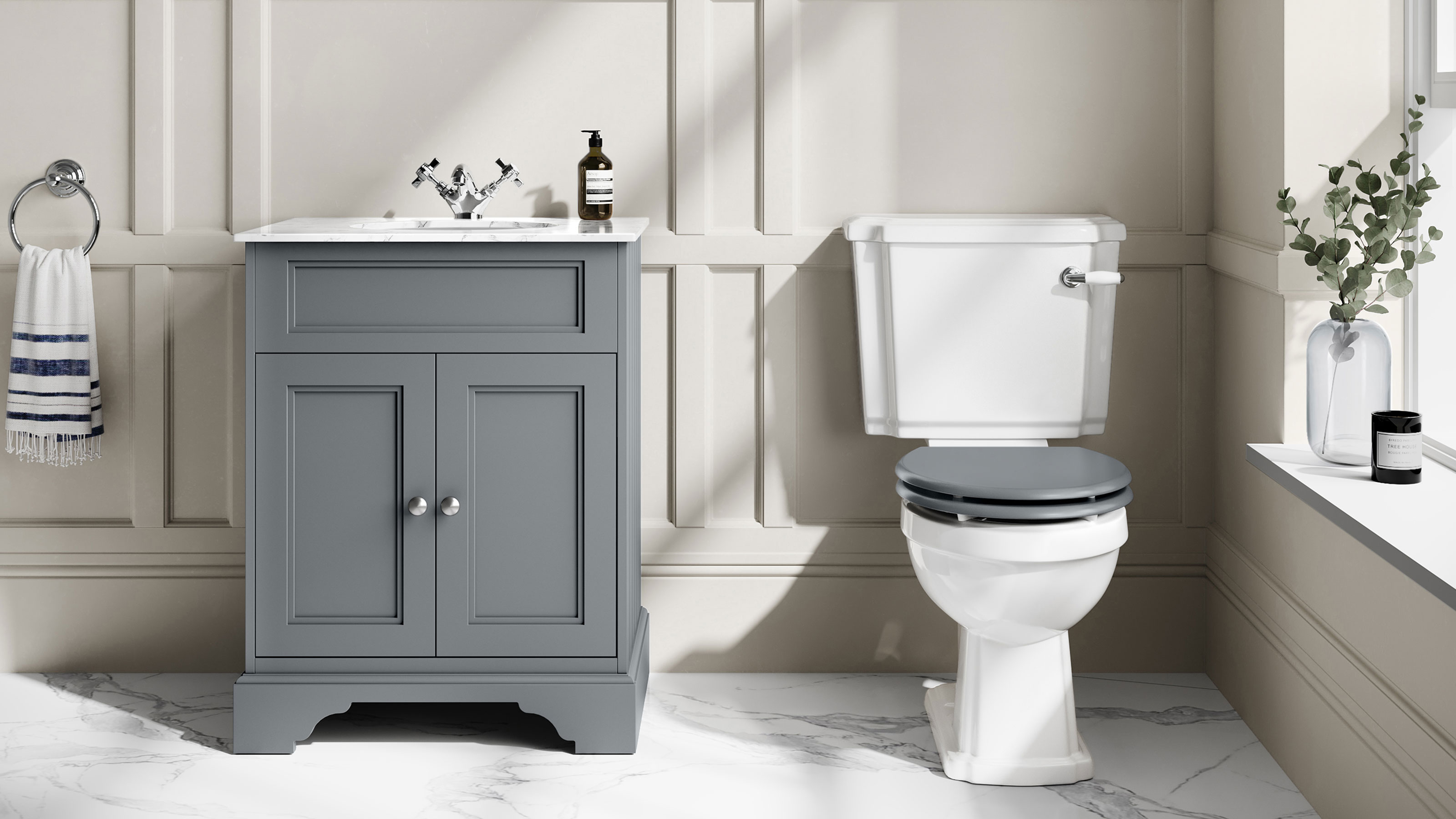
Exactly what is a close coupled toilet? While you might be familiar with the term, do you actually know what it means? We're here to explain the differences between this common toilet type and other designs out there, such as high level toilets and wall-hung models.
When planning your bathroom design, there are a number of important decisions you will need to make, such as the style of sanitaryware you'll opt for and the best layout ideas for your space. You'll also need to think about who will be using the room and choose fittings and finishes that meet the needs of the household. And, finally, you will need to take your budget into account and make sure that the look you are aiming for is achievable.
As an essential piece of sanitaryware, the type of toilet you select needs to be carefully considered — some toilets won't suit certain interior design schemes, while others are more time-consuming and tricky to install.
Here, we take a more in-depth look at the close coupled toilet and explain what it is and the pros and cons of this style.
What is a close coupled toilet?
Quite simply, a close coupled toilet is a design of toilet that sees the toilet cistern sitting directly on top of the back of the toilet pan, forming one complete unit — unlike other styles where the cistern and pan are two separate units, connected only by pipework. On some models, the waste pipe remains on show, feeding into the wall from behind the pan. Back-to-wall models usually conceal this pipe.
They come in all kinds of styles, some very traditional in design, others super contemporary. Space-saving designs, perfect for those worried about toilet dimensions interfering with their bathroom layout or on the hunt for small bathroom ideas, are also available.
The flush can be in the form of a level handle or push-button and can be located on the top, front or side of the cistern.
Close coupled toilets are also available in a range of heights — those with raised seat heights are designed to allow easier access for those with mobility difficulties. It is possible to buy corner models of close coupled toilets that are ideal for small cloakrooms or shower rooms.
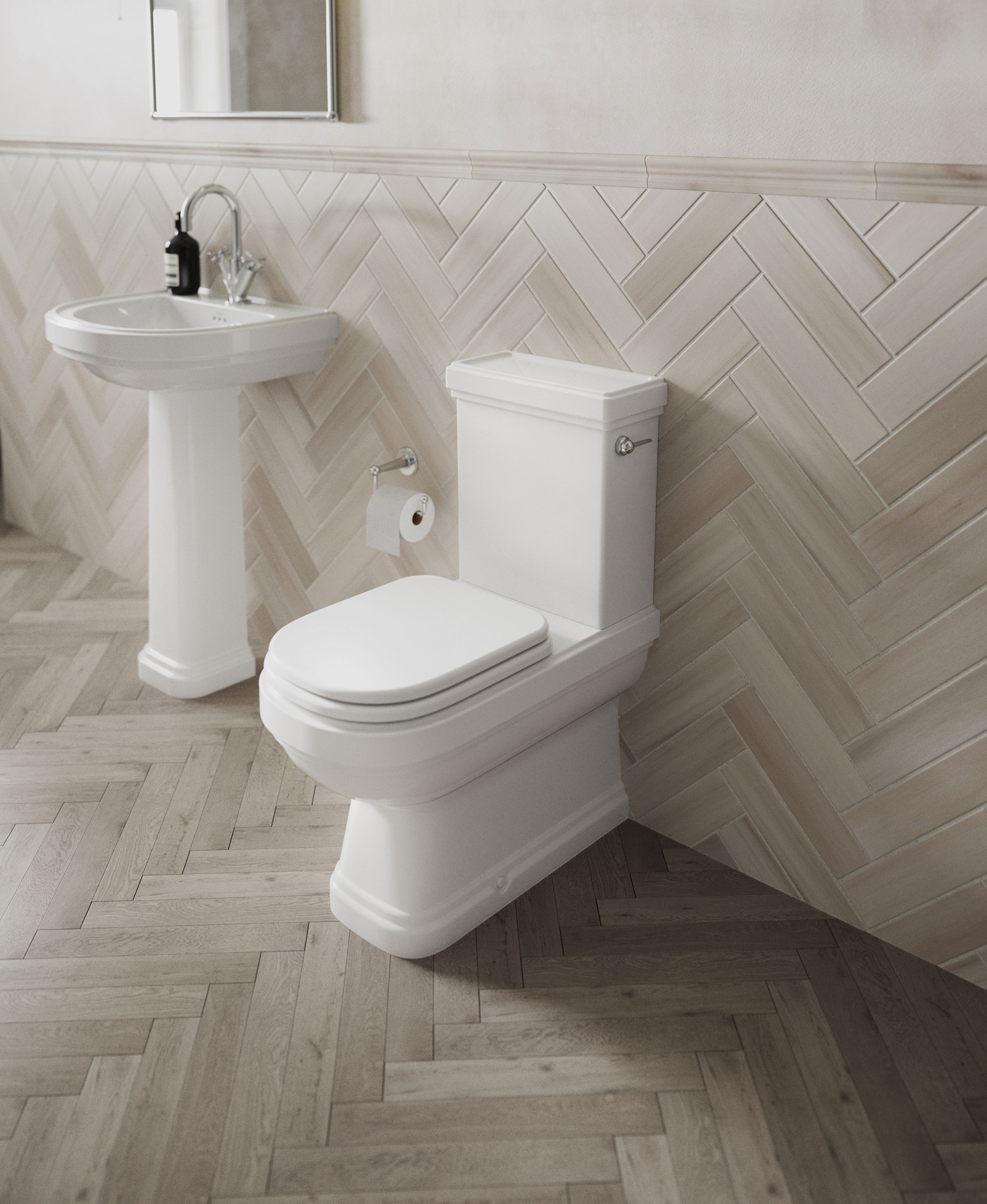
What other types of toilet are available?
Close coupled toilets are just one style — there are others to choose from too, some of which might suit you and your bathroom better. Some are very traditional in their design, while others are best suited to those after modern bathroom ideas, with very sleek and subtle details.
What is a low level toilet?
This toilet style is made up of a pan and cistern that, unlike close coupled toilets, are separate, connected by an exposed 'flush pipe'.
Mid level toilets are also available, where the cistern is set a little higher.
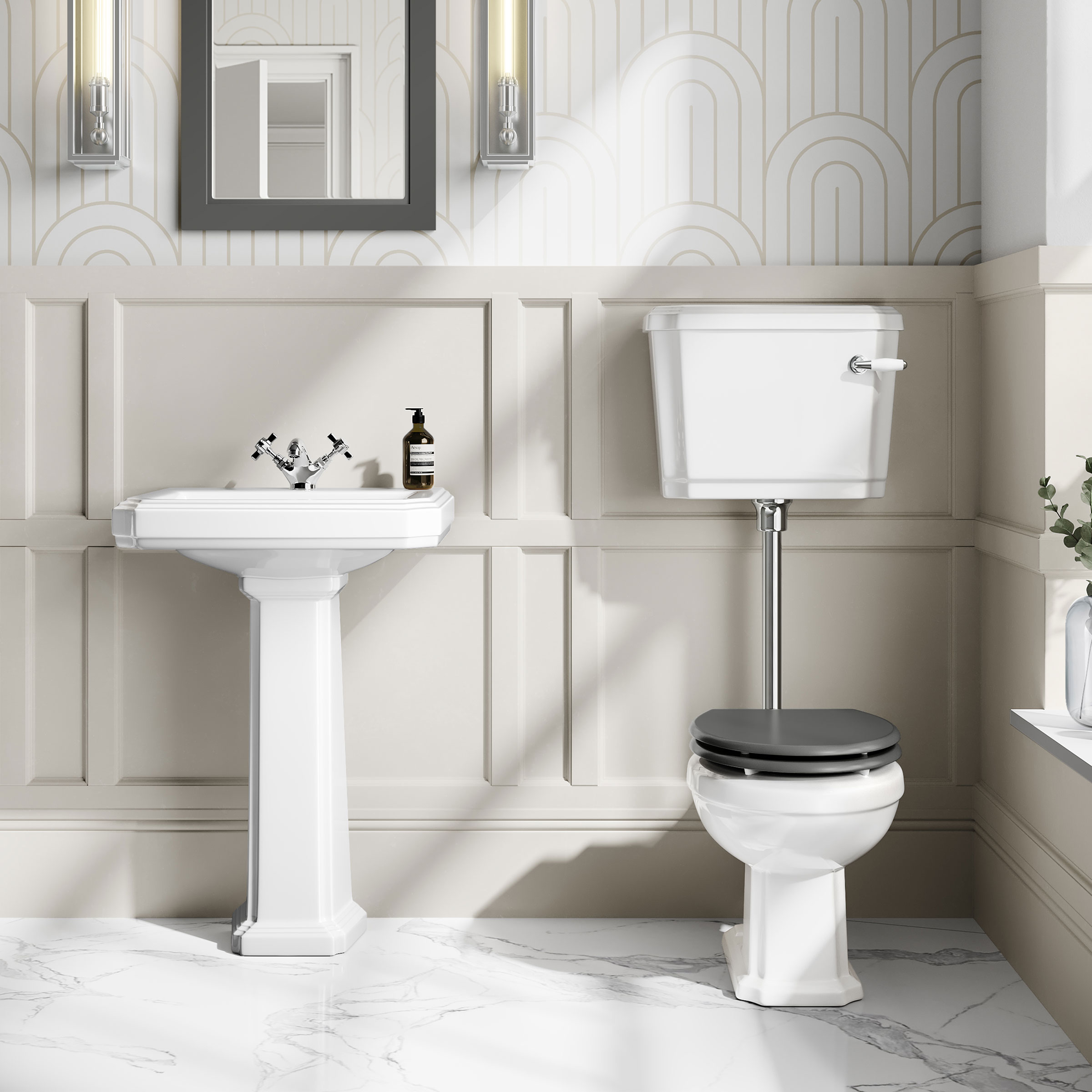
What is a high level toilet?
As the name suggests, high level toilets are made up of a separate cistern and pan, once again connected by a flush pipe, but have the cistern set much higher up the wall.
They feature old-fashioned chain pull flushes and are perfect for those after a very traditional look in their bathroom.
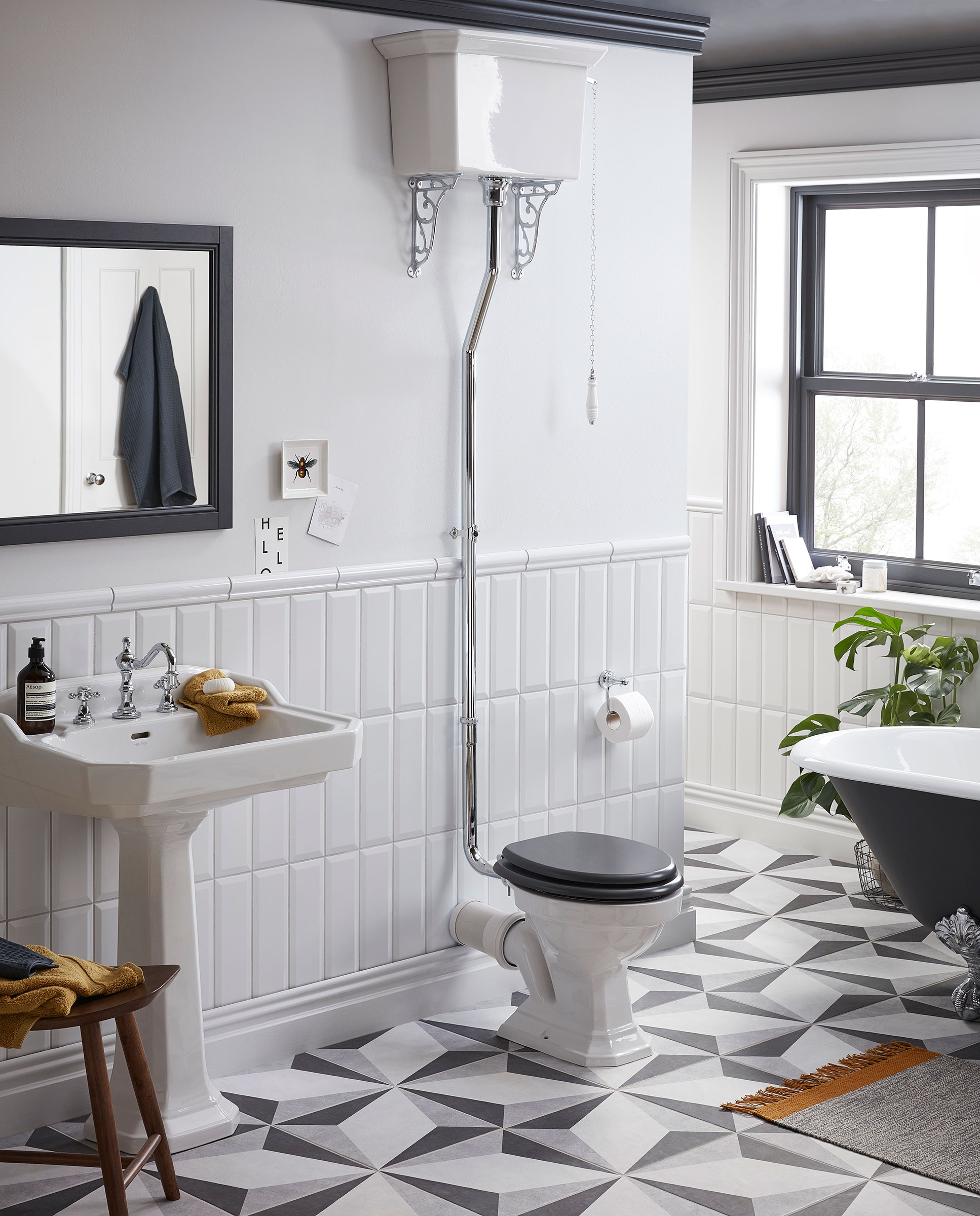
What is a wall-hung toilet?
Perfect for anyone after a clean, modern looking bathroom, wall-hung toilets are a great alternative to close coupled.
The cistern remains hidden from view, supported by a frame either concealed within a stud wall behind or boxed in.
The only visible part of the toilet is the pan, which appears to float out from the wall, leaving the space beneath it clear — this makes it very easy to clean.
The flush plate is usually mounted on the wall behind. In order to access the cistern, the flush plate lifts off.
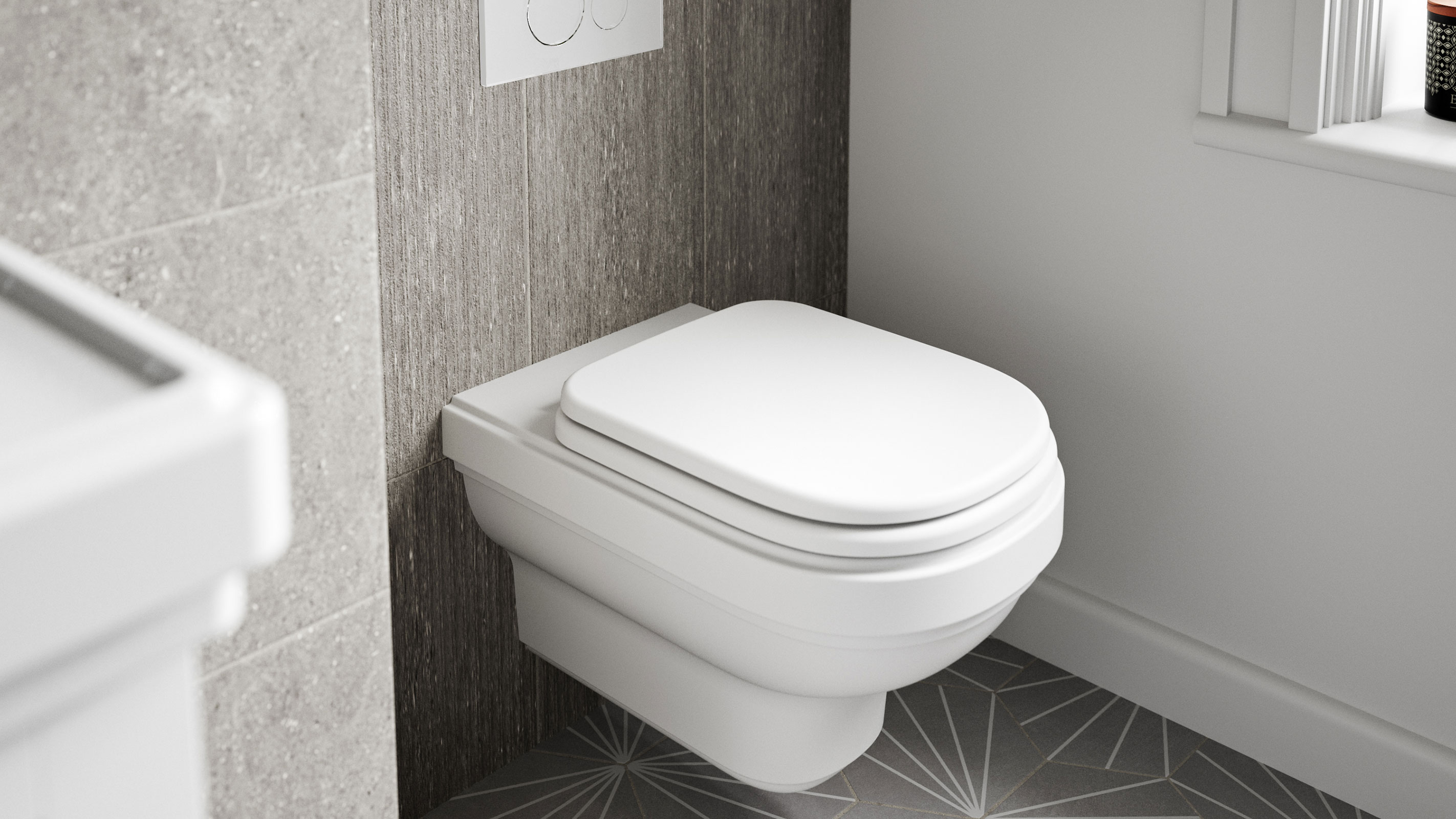
How much do close coupled toilets cost?
Close coupled toilets are perfect for those on a budget, being one of the cheapest types of toilet — although prices do of course vary depending on the model and supplier you opt for.
If you are worried about the cost of fitting a bathroom, this type of toilet is ideal as they are very simple and quick to install.
At the very lowest end of the price scale, close coupled toilets can be picked up for as little as £75. This would be for a very simple design. On average, they cost between around £100-£250, with prices rising to £400 or more for designer models.
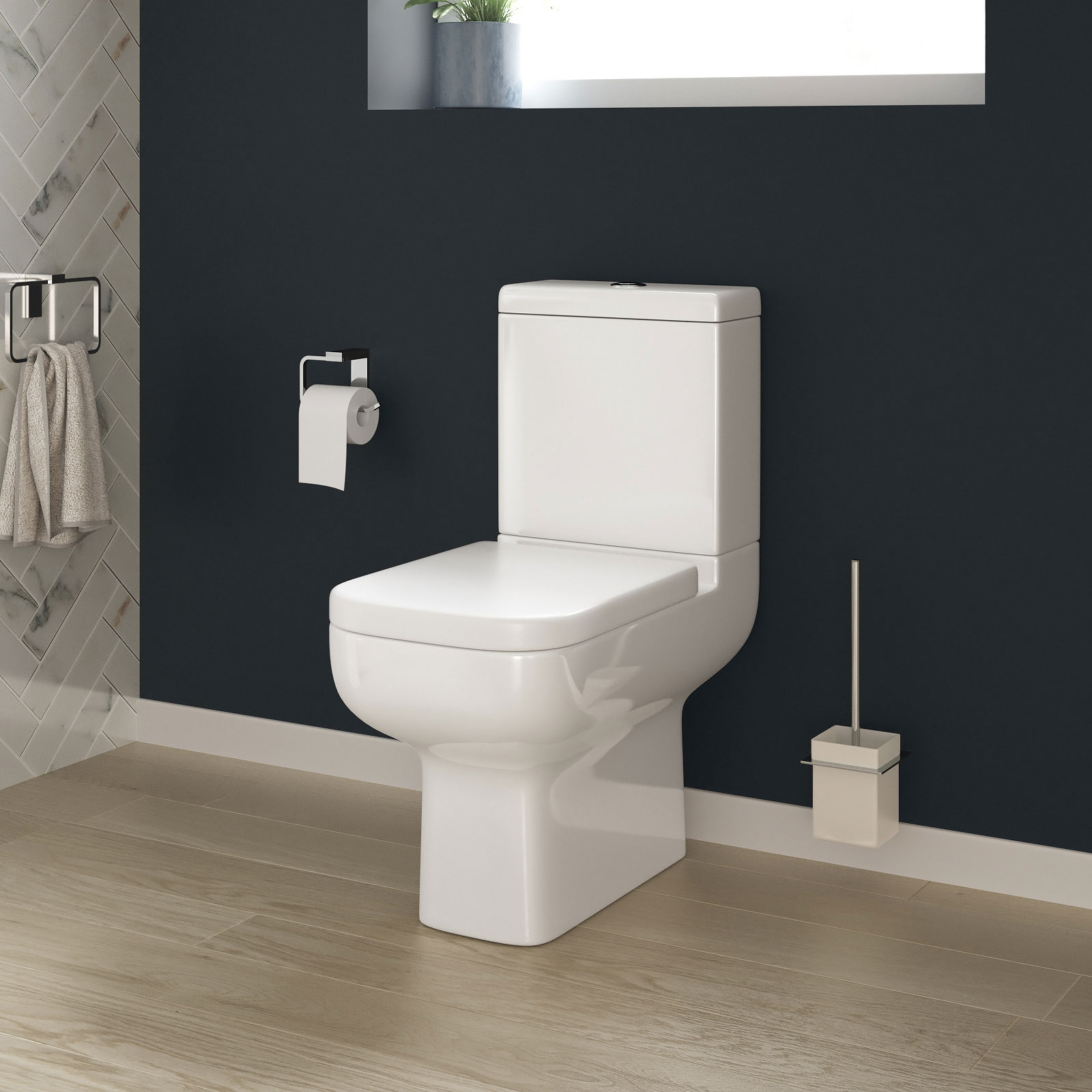
What are the pros and cons of close coupled toilets?
There are many reasons why the close coupled toilet is so popular, but they also have their disadvantages when compared to other styles.
Pros:
- Sturdy and hardwearing: With the cistern and pan being one unit, they are very resistant to damage.
- Quick and easy to install: They are particularly easy in retrofit situations.
- Available in a huge range of styles: Both very traditional and highly contemporary designs are easy to find.
- Affordable: This style of toilet is the most cost-effective and usually the cheapest to install too.
- Timeless: Providing you choose a simple, classic design, this is a style that is unlikely to date.
Cons:
- Harder to clean: It can be difficult to access some areas of this style of toilet to give them a thorough clean. The joining sections between the cistern and pan and around the base can need extra effort.
- Visible waste pipe: In some models, the waste pipe remains on show, leading from the pan and out into the wall behind — not ideal for those after a clean, minimalist look. However, back-to-wall models overcome the issue.
Get the Homebuilding & Renovating Newsletter
Bring your dream home to life with expert advice, how to guides and design inspiration. Sign up for our newsletter and get two free tickets to a Homebuilding & Renovating Show near you.
Natasha was Homebuilding & Renovating’s Associate Content Editor and was a member of the Homebuilding team for over two decades. In her role on Homebuilding & Renovating she imparted her knowledge on a wide range of renovation topics, from window condensation to renovating bathrooms, to removing walls and adding an extension. She continues to write for Homebuilding on these topics, and more. An experienced journalist and renovation expert, she also writes for a number of other homes titles, including Homes & Gardens and Ideal Homes. Over the years Natasha has renovated and carried out a side extension to a Victorian terrace. She is currently living in the rural Edwardian cottage she renovated and extended on a largely DIY basis, living on site for the duration of the project.

